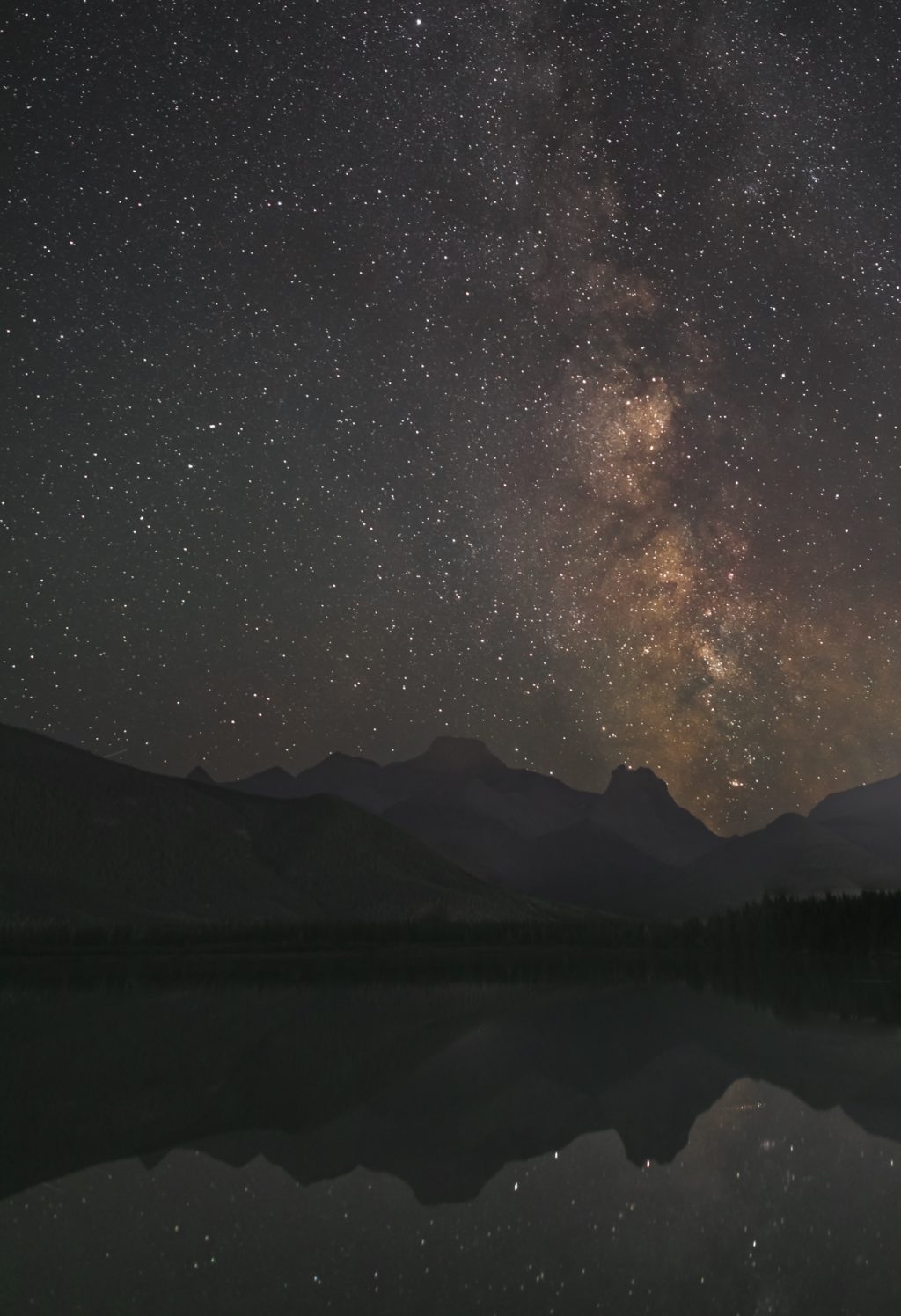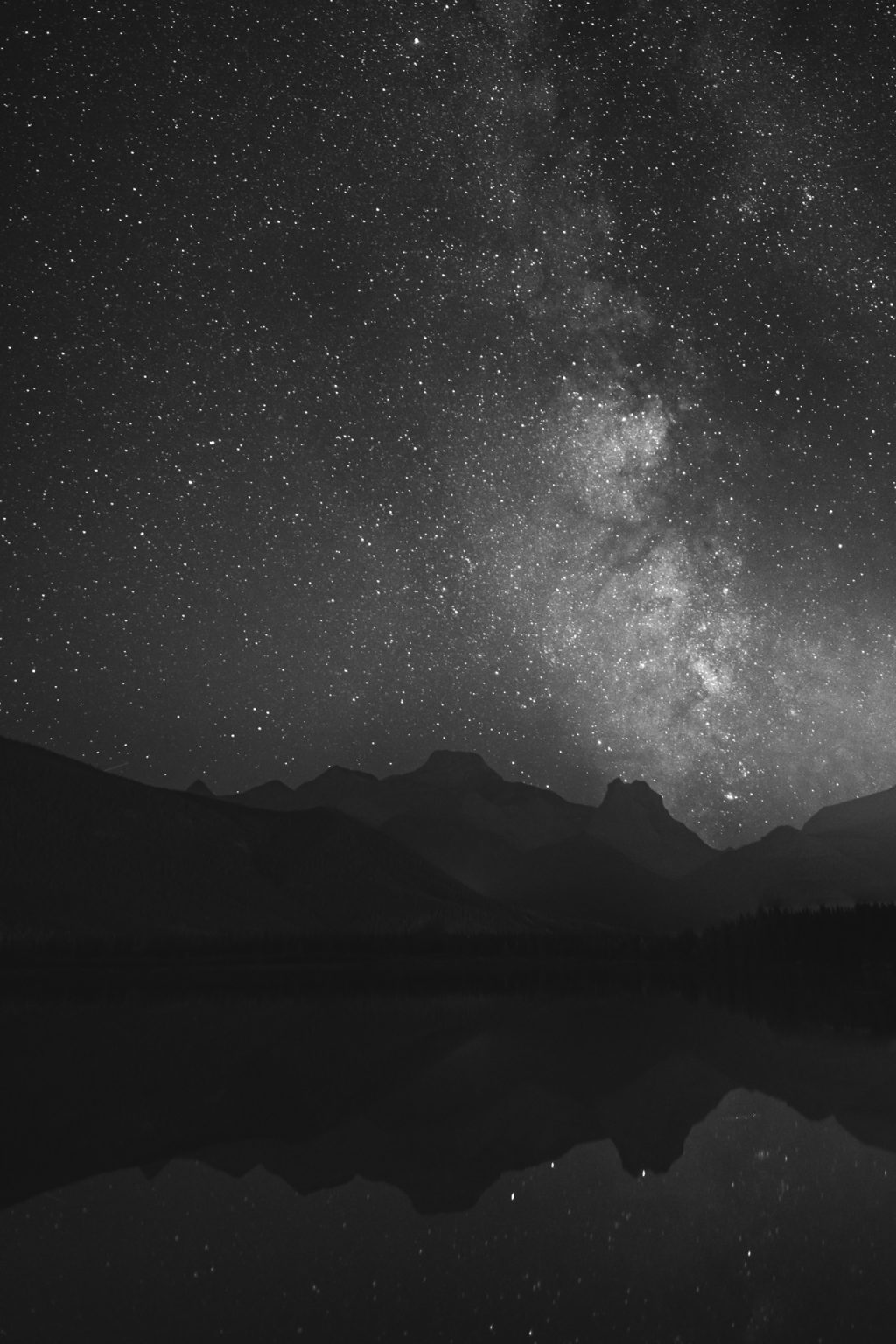Today’s blog features two photographs only, pictures of the Milky Way galaxy, photographed recently at Gap Lake, a short distance east of Canmore. All my photographs from that evening are essentially the same, so I’m only sharing two in this post, a coloured and a black white version.
The Milky Way is the galaxy that includes our Solar System, with the name describing the galaxy’s appearance from Earth: a hazy band of light seen in the night sky formed from stars that cannot be individually distinguished by the naked eye. The Milky Way is visible in our area from late Spring to late Autumn. It is not easy to see with the naked eye but once located it’s faintly visible as a band of stars across the night sky. The best time to photograph it is during the few nights around the monthly occurrence of the New Moon, when the when the Moon’s orbit around Earth moves it between Earth and the Sun. From Earth, the Moon’s surface looks dark because the illuminated side is facing away from Earth. At these times, there is little to no light from the moon to obscure the view of the Milky Way.
The following photos are much brighter and clearer than what can be seen with the naked eye. That is because these photographs are long exposures (15-25 seconds). While the camera shutter remains open, the faint light of the galaxy accumulates on the camera sensor, building the brighter image you see in the photograph.
In this first picture I’ve also captured the surrounding terrain including Gap Lake in the foreground and Mount Lougheed and Windtower in the background. I was fortunate to have a calm evening, enabling me to get reflections of several of the brighter stars on the surface of the water.
Photography of the Milky Way has its challenges. Extraneous light, for example the glow of Canmore and light from passing vehicles must be avoided or subsequently eliminated from the exposure. These images required some “cleaning” to eliminate unwanted light. It can be difficult to achieve focus across all areas of the picture. This is especially true when you’re trying to do it in the dark of night. Exposure times must be relatively brief to avoid streaking of the stars due to rotation of the earth. The camera is moving in relation to the stars! Because exposure times are limited, it is necessary to use a lens with a large aperture and/or operate the camera with high sensitivity of its sensor to capture the amount of light needed. Sensitivity should be contained to minimize noise on the image.
Achieving a good photograph is about balancing these variables well.
So why two, virtually identical photographs today? Despite there being little colour in the night sky, there is some and you’re unlikely to see it with the naked eye. A subject such as the Milky Way has colour and you can catch it in a photograph.

I like the black and white version because I see better contrast and a cleaner image. The black and white is created by converting a copy of the coloured version, so presumably flaws are better obscured.

I had an enjoyable evening, not too late at this time of the year when darkness comes early. And it wasn’t cold! Thanks to Harv Emter for joining me and for his always helpful tips and ideas.
